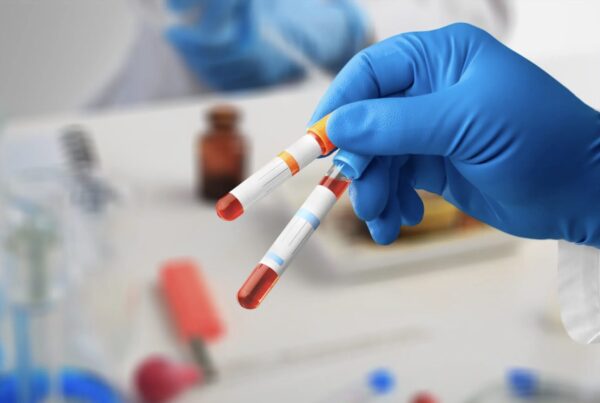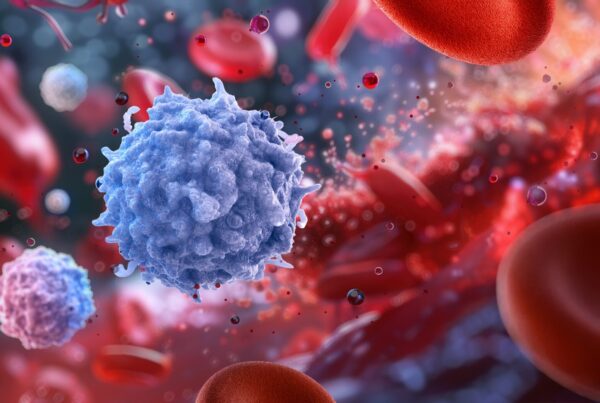Understanding HLA typing and its role in research
The Human Leukocyte Antigen (HLA) system is a critical component of immune system function and a cornerstone of immunology and hematology research. Encoded by the major histocompatibility complex (MHC) on chromosome 6, HLA molecules help the immune system distinguish between self and non-self—crucial in areas ranging from transplantation to autoimmune disease, infectious disease, and cancer immunotherapy [1][2].
There are two main classes of HLA:
- Class I (HLA-A, HLA-B, HLA-C): Expressed on nearly all nucleated cells, these molecules present endogenous peptides (e.g., viral or tumor-derived) to CD8+ cytotoxic T cells, triggering an immune response [3].
- Class II (HLA-DP, HLA-DQ, HLA-DR): Expressed primarily on antigen-presenting cells (APCs) like dendritic cells, B cells, and macrophages, these molecules present exogenous antigens to CD4+ helper T cells [4].
Each HLA gene is highly polymorphic, with thousands of allelic variants identified globally. This polymorphism enhances immune recognition but makes finding HLA-matched donors for research particularly complex. Studies requiring antigen-specific T-cell activation, allogeneic responses, or cellular therapies often depend on donors with rare HLA profiles, making biospecimen sourcing a significant hurdle for many labs [5][6].
Case study: Delivering rare HLA biospecimen sourcing on a staggered schedule
A recent collaboration with Research Donors illustrates how precise HLA biospecimen sourcing and logistical agility can support complex scientific studies that depend on rare donor profiles.
The challenge
A client running an advanced immunology program required leukopaks and matching serum from donors with a rare HLA type. To align with their experimental workflow and resource availability, they requested staggered deliveries of these biospecimens across several weeks, with each delivery scheduled for a specific date.
The solution
Research Donors leveraged its deep database of pre-screened, consented donors and initiated targeted recruitment to meet the project’s unique demands.
In total, the team provided high-quality leukopaks and matching serum from 22 donors, including:
- 15 newly recruited donors, ensuring long-term resource access,
- 7 donors carrying the specified HLA type.
All biospecimens were delivered on the client’s requested schedule, ensuring each sample arrived precisely when needed, without disrupting lab workflows or compromising viability.
The outcome
The client benefited from:
- Timely, reliable access to rare HLA-matched biospecimens,
- High-quality paired leukopaks and serum,
- A flexible sourcing partner that adapts to complex delivery needs.
Need blood samples collected to your exact specifications?
Contact us today to discuss your custom biospecimen requirements.
Precision HLA biospecimen sourcing for immunology and haematology research
From HLA-restricted antigen discovery to adoptive T-cell therapy, the need for well-characterised donor material continues to grow. Yet many research teams face delays and added costs when sourcing HLA-specific biospecimens—especially when rare alleles or timed deliveries are involved.
At Research Donors, we provide:
• Access to a continually expanding donor registry,
• On-demand HLA typing and pre-screening,
• Project-managed delivery logistics—from bulk collections to staggered shipments.
If your research hinges on donor HLA profiles, we’re here to make HLA biospecimen sourcing faster, easier, and tailored to your timeline.
References
- Shiina, T., Hosomichi, K., Inoko, H., & Kulski, J. K. (2009). The HLA genomic loci map: expression, interaction, diversity and disease. Journal of Human Genetics, 54(1), 15–39. https://doi.org/10.1038/jhg.2008.5
- Dendrou, C. A., Petersen, J., Rossjohn, J., & Fugger, L. (2018). HLA variation and disease. Nature Reviews Immunology, 18(5), 325–339. https://doi.org/10.1038/nri.2017.143
- Neefjes, J., Jongsma, M. L. M., Paul, P., & Bakke, O. (2011). Towards a systems understanding of MHC class I and MHC class II antigen presentation. Nature Reviews Immunology, 11(12), 823–836. https://doi.org/10.1038/nri3084
- Roche, P. A., & Furuta, K. (2015). The ins and outs of MHC class II–mediated antigen processing and presentation. Nature Reviews Immunology, 15(4), 203–216. https://doi.org/10.1038/nri3818
- Robinson, J., Barker, D. J., Georgiou, X., Cooper, M. A., Flicek, P., & Marsh, S. G. E. (2020). IPD-IMGT/HLA Database. Nucleic Acids Research, 48(D1), D948–D955. https://doi.org/10.1093/nar/gkz950
- Bettinotti, M. P., Zachary, A. A., & Leffell, M. S. (2003). HLA typing: past, present, and future. Human Immunology, 64(5), 307–313. https://doi.org/10.1016/S0198-8859(03)00032-6






